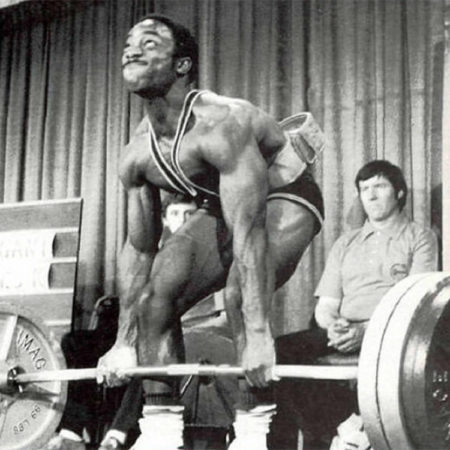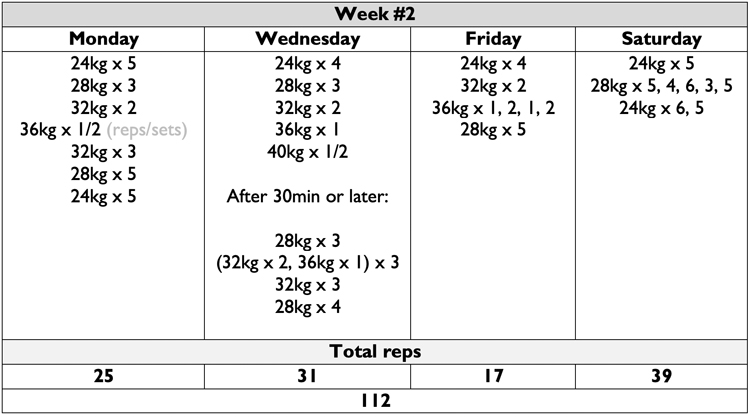By Fabio Zonin, Master SFG and Pavel Tsatsouline

Earlier this year, we launched “Reload: Your Barbell Strength Blueprint,” a concise e-book featuring individually-tailored, nearly-foolproof strength programming. Some of our readers asked the question that became the title of this article. Here is our answer.
Let us start by clearly stating which training philosophy each represents:
- Reload—American powerlifting cycling 2.0
- Plan Strong™—Soviet weightlifting methodology
On to the background and details.
Powerlifting Cycling: Progressive Overload, the Smart Way
Everyone is familiar with the concept of progressive overload. Tomorrow you will lift more weight, do more reps, or get the same work done in less time than yesterday. Next week, the volume, intensity, or density will be higher than this week… and so on and so forth.
If only getting strong were as simple as adding a rep or a pound a week…
Reality, however, has its own rules and timeline: if you keep going up and up in the name of progressive overload, you will reach the inevitable point when your body just calls it quits. Why? We do not yet know exactly, but nervous and endocrine systems’ fatigue definitely plays a part. Russian specialists concluded that the latter can tolerate only two weeks of hard loading out of four. Violate the “2 out of 4 rule” at your own risk.
Unlike many gym bros brainwashed by the “high intensity” propaganda, successful lifters are a smart and analytical lot. They learned to deload. “There were guys around who worked to their limit either on reps or singles all the time in their training, but they didn’t last long,” recalls powerlifting pioneer Dr. Terry Todd. “They either burned out or got an injury of some sort. Those of us who lasted and continued to improve found that we had to start out conservatively—to use light weights for a while and then go on to the increasingly heavier poundages. Then, following a meet, we’d always take a break before coming back, to begin with light weights.”
This is the essence of powerlifting “cycling” or “American periodization” born in the 1970s and refined in the 1980s. Philosophically, it is still progressive overload—a linear progression—but one that complies with the body’s natural rhythms.
In power cycles designed by coach extraordinaire Marty Gallagher, you will see four-week phases abiding by the “2 out of 4 rule.” The weight starts light and goes up every week, typically matching an old rep PR in week three, and setting a new one in week four. This deceptively simple tactic produced some of the strongest men in history, from Lamar Gant to Kirk Karwoski. Other than the Soviet Olympic weightlifting system of the same vintage, no other training system has ever asserted such decisive and lasting dominance on the lifting platform.

Set in 1982, this record is still untouchable.
Soviet Weightlifting Methodology: Surprising the Body, the Right Way
The Soviet system, unlike cycling—or pretty much any other method out there—does not prescribe progressive overload. There are no goals of a PR triple in week eight and such. Instead, it employs Prof. Arkady Vorobyev’s revolutionary variable overload.
Specific numbers well within the lifter’s ability are prescribed. Here is an example from Plan Strong™ plan 501G for a girevik with a 40kg kettlebell military press max (one of the high volume weeks):

Intensity, and especially volume, whiplash from day to day and week to week in a very non-linear manner. And then comes the competition or test day—and you suddenly put up a PR. 85% of the gireviks who followed plan 501 pressed 44kg or 48kg eight weeks later.
Variable overload is the proven alternative to the bro wisdom of “constantly surprising the body.” Only instead of changing the exercises or lifts, which prevents one from getting traction in any one of them, the volume and the intensity keep changing. The exact loading parameters and the patterns of their change have been refined over decades of trial and error on Soviet weightlifters of all levels.
Which is Better?
Which system should you choose, Soviet variable overload or American cycling?
Both systems are second to none, as witnessed by their track records. Refer to Forward to the Past blog for details.

And both have their own edges.
The Russian system offers an unmatched opportunity for finessing one’s lifting skills to the elite level. Every lift is trained several times a week, mostly with loads heavy enough to demand respect yet light enough not to question your ability to lift them.
In contrast, the American system usually calls for much lower volume and frequency—and many of the weights are either too light or too heavy for optimal practice.
Of course, the negative is also a positive: the American system is much more time efficient.
Cycling works best when one builds muscle along with strength. Marty Gallagher’s classic guideline calls for eating enough to add a pound of bodyweight per week in a twelve-week cycle. A perfect prescription for one—and disastrous for another.
With Plan Strong™, the number of ~90% 1RM lifts is low—but they are practiced regularly. That means you are never too far from your peak. And you are always confident with heavy weights. In contrast, when cycling, you are going heavy only towards the end of a cycle, after months of not touching anything heavy. This could make you man up or woman up—or mess with your head and make you question your ability. And no matter how tough you are, the cycle gets progressively more stressful towards the peak and you risk burning out.
On the other hand, once you have run two or three Plan Strong™ plans back to back, you might end up feeling mentally tired. After all, for up to six months you have been handling weights above 70% 1RM at almost every training session and up to 90-95% 1RM on a regular basis. Your joints might appreciate a break too.
Thus, a cycling plan, with its several initial light weeks, will turn out to be very restorative for your body and your spirit. Your mind will be hungry for new PRs and your connective tissues will be ready to support them. This is one of the reasons why even the biggest fans of the Soviet system will enjoy the benefits of a good ole’ American cycle once or twice in a year.
Plan Strong™ is highly customized—which is an asset and a liability. It takes an experienced coach four hours to write an eight-week Plan Strong™ plan for one lift (we also offer Plan Strong™ individualized plans if you do not feel like sweating with a calculator).
Cycling plans are much easier to write—but they are also much more hit and miss.
“[Cycling] works well for some, but I commonly hear lifters say they tripled more in training than they did for a single in a meet,” observed Louie Simmons. “Missing a peak is one problem with this type of training.”
The problem is, traditional cycling imposes the same rate of progression on athletes with different strength endurance—the number of reps they can do with 80% 1RM. As a result, two lifters with the same 1RM but different ability to rep out will have totally different experiences with the same cycle. One might undertrain and the other overtrain.
Enter Reload
At StrongFirst we enjoy the challenge of polishing the chrome of classic methods. We stand by “cycling” as one of the best ways to build barbell strength. We also recognize that even timeless methods benefit from periodic updates.
While cycling works great for many, it can fail others by imposing a cookie cutter progression rhythm. To tackle this problem, StrongFirst developed a series of straightforward tests and instructions that will enable you to build a power cycle just for you. While at it, we kept the original system’s spirit and simplicity. We tested and retested Reload. It delivered over and over.
Classic cycling has a tremendous legacy and it is with the greatest respect and humility that we have attempted to improve it.
In The Pleasure of Finding Things Out, the great scientist Richard Feynman wrote: “Each generation that discovers something from its experience must pass that on, but it must pass that on with a delicate balance of respect and disrespect, so that the race does not inflict its errors too rigidly on its youth, but it does pass on the accumulated wisdom… It is necessary to teach both to accept and to reject the past with a kind of balance that takes considerable skill…”
Get your digital download of Reload HERE.





I bought Reload and started it with the deadlift only last week. I have been doing S&S for 4 years and am now doing it with the 40kg bell. I am a serious recreational/lifestyle judoka and even though I’m starting Reload according to the book’s calculations at a surprising to me “light” 220lbs which happens to be my bodyweight, this is the approximate weight of my judo opponents on the mat, so even at it’s lightest starting weight the program is 100% satisfactory to me. I can’t wait until I can do 5X5 with 300lbs and to set a new personal 1 rep maximum beyond 370lbs!
I have a question though:
Is it okay to deadlift a bit during the week after the one day a week 5X5 session? Like, 2 sets of 5 nearly daily?
“Is it okay to deadlift a bit during the week after the one day a week 5X5 session? Like, 2 sets of 5 nearly daily?”
You could. Or how about scheduling one light session (5/5 @65%1RM) per week instead?
Just finished week five of Reloaded, everything on target so I’m happy.
Pavel – welcome back to the site! So good to read an updated article from you.
Thank you for the clarity in this message (the difference between the systems). I don’t even lift barbells (I’m a body weight fan) but will purchase this!
Hope this is the ‘return of the Pavel’ to the blog!
the quality of the chairman´s texts cannot be beaten.
Please continue to contribute to this page more often!!!